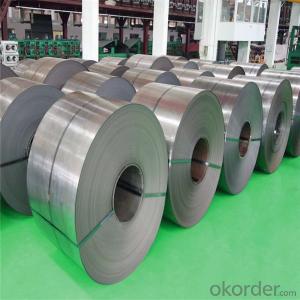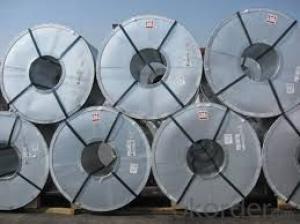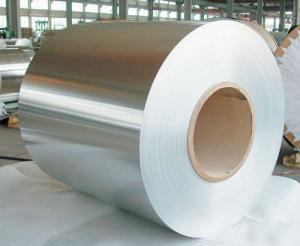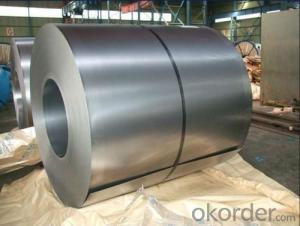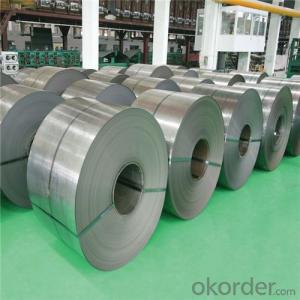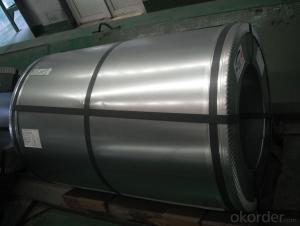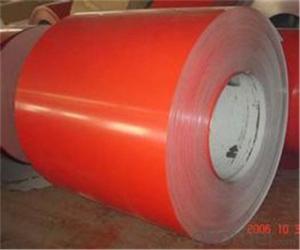Hot Rolled&Cold Rolled Galvanized Steel Coil
- Loading Port:
- China main port
- Payment Terms:
- TT OR LC
- Min Order Qty:
- 23 m.t.
- Supply Capability:
- 50000 m.t./month
OKorder Service Pledge
OKorder Financial Service
You Might Also Like
Specification
Product Description
Thickness: 0.16mm-1.20mm
Coil width:600mm-1250mm
Coil weight: 3.0-6.0MT
Surface finish : 60-120g/m2 zinc coating and any Ral code the customers requirment!
Spangle: Big Spangle,Small Spangle,Regular Spangle,Zero Spangle.
Steel grades: Q195-Q345,GR.A,GR.B, SPCC,SPHC,DX51D, ECT.
Standard: JIS G3302, JIS G3313, ASTM A653, GB/T2518-88, GB11253-89,ASTM A1008-2000,BS,ETC.
Packing: wrapped by plastic film and waterproof paper, and then fastened on wooden pallet.
Used in building material field,Pipe making, furniture making,others
Minimum order quantity : 25 tons
Delivery times : 20 days after received T/T or L/C
Payment terms : T/T or L/C ( or as your demand)
Supply abilty : 6,000 ton per month
Product Picture:
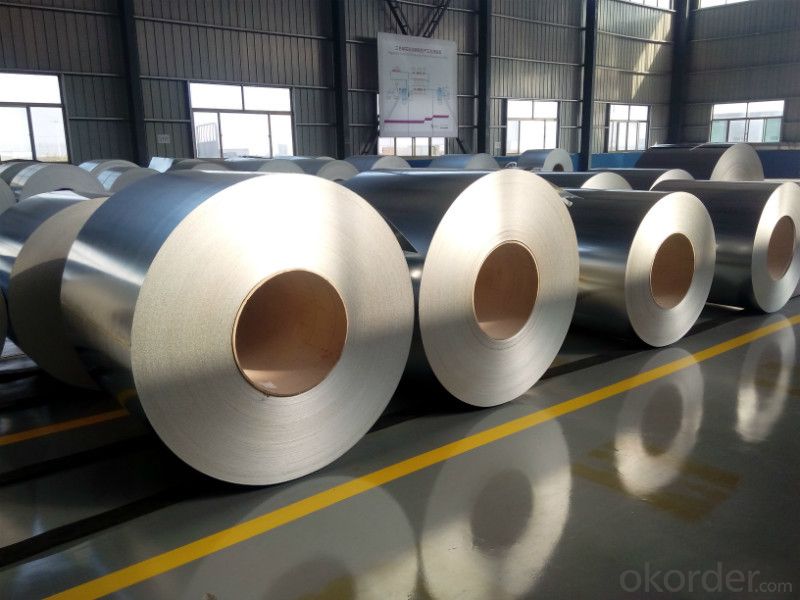
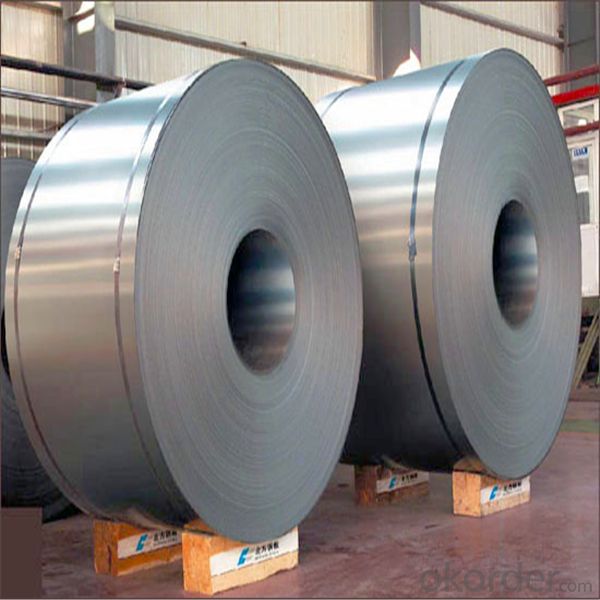
FAQ:
Size | (0.13mm-5.0mm )*(600mm-1500mm)*coil |
Steel Grade | JIS G3302 SGCC~SGC570,SGCH(FULL HARD-G550),SGHC~SGH540 EN 10346-DX51D+Z,DX53D+Z, S250GD~S550GD ASTM A653M CS-B, SS255~SS550 |
Coil Weight | 3MT-14MT |
Coil ID | 508mm/610mm |
Chemical Treatment | Chromated(Cr 3+,6+,0+) |
Surface | Skin pass/non skin pass |
Oil | Slight Oiled/Dry |
Spangle | Regular/Zero/Big |
Zinc Coating | Z40-Z300 |
Capacity | 1,500,000MT/year |
- Q: Which is more reactive? Zinc or Steel? And why?
- Zinc. Steel is an alloy consisting mostly out of iron, In the reactivity seris, zinc is more reactive than iron. Therefore, zinc is more reactive than steel
- Q: looking to buy a sashimi knife. what is the difference between white steel (1and2) and blue steel (1and2) in terms on characteristics. what gets sharper? what holds edge longer? basically any info on the pros and cons of each steel would be SO GREATLY APPRECIATED! thanks in advance to all who answer. i'm leaning towards white-2 steel for my first sashimi knife, started training on the sushi bar and need a new tool!
- Steel Sushi
- Q: How do steel coils contribute to corrosion resistance in products?
- Steel coils contribute to corrosion resistance in products by providing a protective layer that prevents direct contact between the steel surface and corrosive elements in the environment. The coil coating process involves applying a protective coating, such as zinc, to the steel surface, forming a barrier against moisture, chemicals, and other corrosive agents. This coating acts as a sacrificial layer, corroding in place of the steel, thereby extending the lifespan and enhancing the durability of the products.
- Q: Does anyone know what is 12 gage Cold Rolled Steel meaning? Also, help me to describe it.Thank you so muck ~!Mark Lin
- It's gauge.
- Q: How are steel coils used in the production of electrical systems?
- Steel coils are used in the production of electrical systems as they serve as the core component of transformers and inductors. They provide a magnetic field necessary for the efficient functioning and transformation of electrical energy.
- Q: days. Use your knowledge of the corrosion of steel and aluminum to predict how they would look different after a week exposed to rainy weather. Explain your prediction.
- I'd expect appearance of reddish dots or stains of rust on steel, while aluminium should stay virtually unchanged. Explanation: Both materials oxidize in natural environment because of atmospheric moist, but in very different ways. As for steel, oxidation begins as reddish dots of rust which grow and become stains. Oxidation then progresses in depth causing decay of material, compromising its strength and structural integrity.
- Q: What are the safety standards for steel coil manufacturing?
- The safety standards for steel coil manufacturing are designed to ensure the well-being and protection of workers, as well as the quality and reliability of the products produced. These standards encompass various aspects of the manufacturing process and cover both general safety guidelines and industry-specific requirements. One of the main safety standards for steel coil manufacturing is the implementation of proper machinery and equipment safeguards. This includes ensuring that all machinery and equipment used in the manufacturing process are properly maintained, regularly inspected, and equipped with safety features such as emergency stop buttons and safety guards. Workers should also receive adequate training on the safe operation of these machines and be aware of potential hazards. Another important safety standard is the use of personal protective equipment (PPE). Workers involved in steel coil manufacturing should be provided with appropriate PPE, such as safety goggles, gloves, ear protection, and protective clothing, to protect them from potential hazards such as flying sparks, noise, and chemical exposure. Additionally, safety standards for steel coil manufacturing emphasize proper handling and storage of materials. This includes guidelines on how to safely lift and transport heavy steel coils, as well as rules for stacking and storing them to prevent accidents and injuries. Fire safety is also a crucial aspect of the safety standards for steel coil manufacturing. Measures should be in place to prevent and control fires, including regular inspections of electrical systems, proper storage and handling of flammable materials, and the presence of fire extinguishers and emergency evacuation plans. Furthermore, safety standards require regular safety training and awareness programs for all employees involved in steel coil manufacturing. This ensures that workers are well-informed about potential hazards, safety procedures, and emergency protocols. Regular safety audits and inspections are also conducted to assess compliance with these standards and identify areas for improvement. Overall, the safety standards for steel coil manufacturing aim to create a safe working environment, reduce the risk of accidents and injuries, and ensure the production of high-quality steel coils. Compliance with these standards is essential for maintaining the well-being of workers, protecting the environment, and maintaining the reputation of the manufacturing industry.
- Q: What are the different types of steel coil edge conditions?
- There are several different types of steel coil edge conditions, each designed to meet specific requirements and applications. The most common types include: 1. Mill Edge: Mill edge is the default edge condition for hot-rolled steel coils, where the edges are left as they come out of the rolling process. This edge condition is characterized by a slightly rough and uneven surface. 2. Slit Edge: Slit edge is created by cutting the coil along its width to achieve narrower strips. This edge condition is typically smoother and more uniform than mill edge, making it suitable for applications where a clean and precise edge is required. 3. Trimmed Edge: Trimmed edge is achieved by removing irregularities and imperfections from the edges of the coil. This process results in a straight and smooth edge, making it suitable for applications where a precise and uniform surface is necessary. 4. Deburred Edge: Deburred edge is created by removing burrs or sharp edges from the coil. This edge condition is commonly used in applications where safety is a concern, as it eliminates any potential hazards associated with sharp edges. 5. Round Edge: Round edge is achieved by rounding the corners of the coil. This edge condition is often employed in applications where the material needs to be easily handled or when there is a need to prevent damage to other materials or surfaces. 6. Slit and Deburred Edge: Slit and deburred edge combines the benefits of both slit edge and deburred edge conditions. It involves cutting the coil to achieve narrower strips and then removing any burrs or sharp edges, resulting in a clean and safe edge. Each of these edge conditions serves a specific purpose and is chosen based on the requirements of the application. By understanding the different types of steel coil edge conditions, one can select the most suitable option to ensure optimal performance and safety.
- Q: What are the different methods of slitting edge trimming for steel coils?
- Steel coils can be slit using various methods, each with its own benefits and applications. 1. Rotary Shear Slitting: This approach utilizes rotary knives mounted on a rotating shaft to cut through the steel coil. The knives create a shearing action as they pass through the coil. Rotary shear slitting is versatile, accommodating various coil thicknesses and materials. It is commonly employed for high-volume production, offering clean and precise cuts. 2. Crush Cut Slitting: This method involves pressing the steel coil against a hardened anvil with a rotating knife. The coil is cut by crushing it against the anvil. Crush cut slitting is suitable for thinner gauge materials and those sensitive to shearing forces. It provides clean cuts but may have limitations in terms of coil thickness and width. 3. Razor Slitting: Razor slitting employs a razor blade mounted on a rotating shaft to slice through the steel coil. This method is commonly used for thin and delicate materials that require precise and burr-free edges. While it provides clean cuts, it may be limited in terms of coil thickness and width. 4. Shear Slitting: This approach utilizes a pair of opposing blades to shear through the steel coil. The blades move past each other, creating a scissor-like cutting action. Shear slitting is commonly used for heavier gauge materials, offering clean and precise cuts. It is suitable for high-speed production and can handle a wide range of coil thicknesses and materials. 5. Laser Slitting: Laser slitting employs a high-powered laser beam guided by computer-controlled optics to cut through the steel coil. It offers precise and clean cuts and is suitable for various coil thicknesses and materials, including high-strength steels. Laser slitting provides a high level of accuracy and can handle complex cutting patterns. Each method has its own advantages and considerations, depending on the specific requirements of the steel coil slitting operation. Factors such as coil thickness, material type, desired edge quality, and production volume will influence the choice of slitting method.
- Q: A 100 kg solid steel ball with a radius of 5 m is being spun on ice with an angular velocity of 5 rev/s pointed into the ice (clockwise rotation when viewed from above).A student shoots a 10 kg marble at the steel ball. The marble hits the ball along its side as shown with an initial velocity of 5 m/s to the left. If, right after the collision, the final velocity of the marble is 2.5 m/s to the left, what is the angular velocity of the steel ball after the collision?
- You need to do conservation of angular momentum about the steel ball's axis. Angular momentum = I.ω The steel ball's initial ω = 5 rev/s = 5*2pi rad/s = 31.4 rad/s The steel ball's moment of inertia I = (2/5)*m*r^2 = 40*25 kg.m^2 = 1000 kg.m^2 The marble's initial ω = v / r where r is the perpendicular distance from the steel ball's axis You need to look at the diagram for this. The marble's I about the steel ball's axis is I = m*r^2 where r is the same as above. (marble is treated as a point mass). Then work out the total initial ang. momentum = final ang. momentum and solve for ω...
Send your message to us
Hot Rolled&Cold Rolled Galvanized Steel Coil
- Loading Port:
- China main port
- Payment Terms:
- TT OR LC
- Min Order Qty:
- 23 m.t.
- Supply Capability:
- 50000 m.t./month
OKorder Service Pledge
OKorder Financial Service
Similar products
Hot products
Hot Searches
Related keywords
